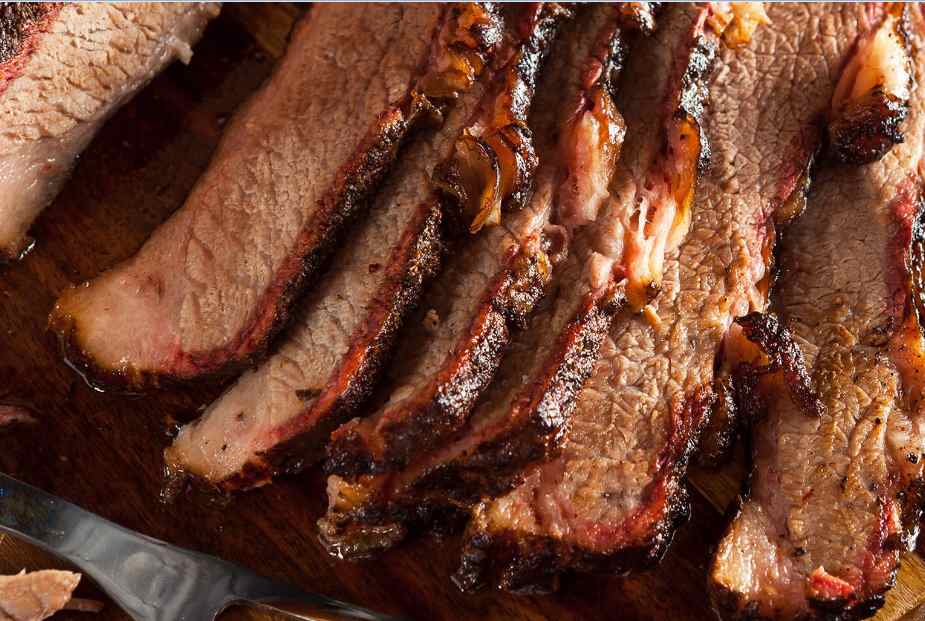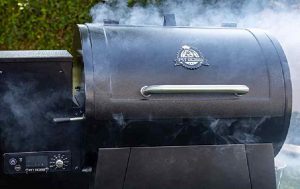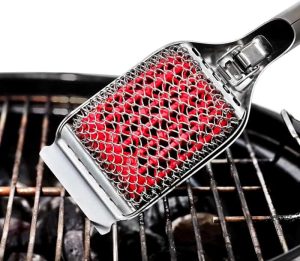When smoking a brisket, getting the timing right is crucial. You might be wondering, “What’s the ideal duration for smoking a brisket per pound?” Don’t worry, we’ve got you covered!
This easy-to-follow guide will outline the basics and help you grasp the variables affecting your cooking time, guaranteeing a flawlessly smoked brisket on your table.
- How Long Does it Take to Smoke a Brisket Per Pound at 225°F And 250°F?
- Is it Better to Smoke Brisket at 225 or 250 Degrees Fahrenheit?
- What Affects the Smoking Time of Your Beef Brisket?
How Long Does it Take to Smoke a Brisket Per Pound at 225°F And 250°F?
Embarking on the journey of smoking a brisket can lead to a mouthwatering, tender, and flavorful barbecue treat that is sure to delight your loved ones.
To make the most of this experience, it’s crucial to pay attention to key details, which we will discuss in this handy guide. Remember, the secret to smoking a perfect brisket is to go low and slow, so let’s get started!
Timing as a Reference:
When it comes to smoking a brisket, using time as a reference rather than a rigid rule is essential, as various factors like temperature and smoker type can impact cooking rates.
The secret to determining when your brisket is ready lies in monitoring its internal temperature. Once it reaches 190-203°F, your brisket is deemed done.
A meat thermometer is a must-have tool to keep track of the internal temperature.
Cooking Duration per Pound:
The most frequently used temperature for smoking a brisket is 225°F. At this temperature, you can expect to smoke the brisket for roughly 1.5 to 2 hours per pound.
Bear in mind that cooking times may vary depending on the smoker and its temperature.
Temperature Guidelines and Cooking Times:
The majority of barbecue enthusiasts opt to smoke their brisket at a low temperature, usually within the 225-250°F range.
Strive for the lower end of this spectrum, as a 25-degree difference only minimally affects cooking times.
If your smoker struggles to maintain low temperatures or you’re after a quicker cook, consider these guidelines:
- For 225°F: Allocate 1 hour and 30 minutes per pound of brisket.
- For 250°F: Allocate 1 hour and 15 minutes per pound of brisket.
Keep in mind that these guidelines are not set in stone, and consistently monitoring your brisket’s internal temperature is vital to ensure an impeccable result.
Here’s the table summarizing the smoking times for briskets of different weights:
| Brisket Weight | Cooking Time at 250°F | Cooking Time at 225°F |
|---|---|---|
| 1.5 lbs | 1.8 hours | 2 hours |
| 2 lbs | 2.5 hours | 3 to 3.5 hours |
| 2.5 lbs | 3 hours | 4 hours |
| 3 lbs | 3.5 hours | 4 to 5 hours |
| 3.5 lbs | 4.5 hours | 5 to 5.5 hours |
| 4 lbs | 5 hours | 6 hours |
| 5 lbs | 6.5 hours | 7.5 to 8 hours |
| 6 lbs | 7.5 hours | 9 hours |
| 8 lbs | 10 hours | 12 to 16 hours |
| 9 lbs | 11.5 hours | 12 to 18 hours |
| 10 lbs | 12.5 hours | 15 hours |
| 12 lbs | 15 hours | 18 hours |
| 14 lbs | 17.5 hours | 21 hours |
| 15 lbs | 18.5 hours | 18 to 24 hours |
| 16 lbs | 20 hours | 24 hours or more |
| 18 lbs | 22.5 hours | 27 hours |
Please note that these times are approximate and can vary depending on factors such as the smoker’s temperature, weather conditions, and the specific cut of the brisket.
Always monitor the internal temperature and adjust the cooking time as needed to achieve the desired tenderness.
Related >> 11 Best Meat Slicers For Home Use
Is it Better to Smoke Brisket at 225 or 250 Degrees Fahrenheit?
When it comes to smoking brisket, the ideal temperature range lies between 225 and 250 degrees Fahrenheit.
The choice between the two temperatures ultimately depends on personal preference and the results you’re aiming for.
Smoking brisket at the lower end of the spectrum, 225 degrees Fahrenheit, typically yields a more tender and juicy result with a pronounced smoky flavor.
This temperature is recommended for those who prefer a deeper, smokier taste in their brisket.
On the other hand, smoking at a slightly higher temperature of 250 degrees Fahrenheit can reduce the overall cooking time while still rendering the soft fat in the brisket, resulting in a juicy and delicious meal.
This option is ideal for those looking to save some time without compromising on the tenderness of their brisket.
Regardless of the temperature you choose, both 225 and 250 degrees Fahrenheit are considered “low and slow” methods of smoking, ensuring that your brisket will be infused with great smoke flavor and have a tender texture.
However, if you opt for the faster 250-degree approach, be mindful of your fire, as it may consume fuel more quickly.
In conclusion, whether you choose to smoke your brisket at 225 or 250 degrees Fahrenheit, you can still expect delicious, tender results.
The main difference lies in the intensity of the smoky flavor and the cooking duration, so select the temperature that aligns with your preferences and time constraints.
Related>> Smoking Wood Flavor Guide
What Affects the Smoking Time of Your Beef Brisket?
When it comes to smoking beef brisket, there are several factors that can impact the cooking time.
1. First, the type of smoker you use can make a difference, as electric and gas smokers generally offer more consistent temperatures than other types.
The specific quirks of your smoker may also affect cooking time, so it’s important to familiarize yourself with its performance.
2. The size, thickness, and fat content of the brisket are other significant factors.
Larger and thicker cuts of meat will take longer to cook, as well as briskets with higher fat content.
3. It’s important to choose a brisket with the right amount of marbling and to trim off any excess hard fat.
4. Preparation methods, such as letting the beef sit at room temperature before cooking or wrapping it in foil or butcher paper, can help shorten the cooking time without sacrificing flavor or texture.
5. Additionally, the cooking method and type of smoker used can influence the time it takes to smoke a brisket.
6. Lastly, ambient conditions like temperature, wind, and humidity can also play a role in cooking time.
Hotter days can lead to faster cooking, while cold or windy conditions may require more time.
Make sure to monitor your brisket and the smoker’s temperature throughout the process, and adjust cooking times accordingly.
Related >> 11 Types of Ribs (From Pork to Lamb)
Related >> How to Cook Sirloin Steak
Final Thoughts
By learning the optimal duration for smoking a brisket per pound and being mindful of the elements that can influence the cooking process, you’ll be on your way to achieving a melt-in-your-mouth, flavorful brisket.
Keep honing your skills and paying attention to the finer points, and you’ll become a brisket-smoking pro before you know it.
>> Visit our extensive BBQ guides page for more articles that are similar to this one.
Greetings! I’m Chad, a 43-year-old barbecue aficionado hailing from the beautiful state of Texas. I’m thrilled to invite you on a culinary journey as we explore the art of grilling and smoking together. Through this blog, I aim to ignite your passion for barbecue by offering:
Scrumptious, time-honored BBQ recipes passed down through generations, guaranteed to tantalize your taste buds.
Expert guidance on mastering the grill, smoker, and diverse cooking techniques to elevate your barbecue game.
Recommendations on choosing the perfect tools and equipment tailored to your grilling requirements.
An inside look at the latest trends, innovations, and advancements in the ever-evolving world of barbecue.





